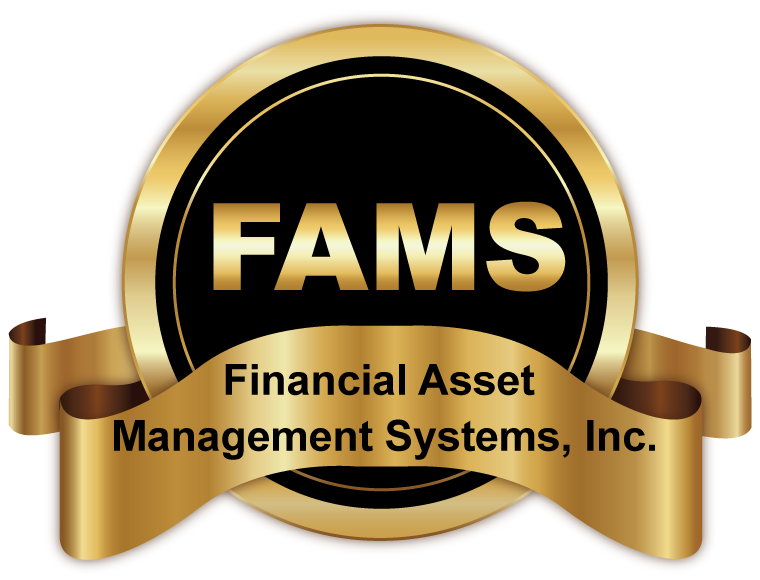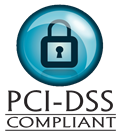The information below describes the Public Service Loan Forgiveness Program (PSLF). It includes the eligibility requirements and the process for tracking your progress toward qualifying for PSLF. This information can also be found in the
PSLF Fact Sheet(PDF) and the
Dear Borrower Letter(PDF), which can be downloaded and printed.
back to top
In 2007, Congress created the Public Service Loan Forgiveness Program to encourage individuals to enter and continue to work full-time in public service jobs. Under this program, borrowers may qualify for forgiveness of the remaining balance due on their eligible federal student loans after they have made 120 payments on those loans under certain repayment plans while employed full time by certain public service employers.
back to top
- You must make 120 on-time, full, scheduled, monthly payments on your loans. Only payments made after October 1, 2007 qualify.
- You must make those payments under a qualifying repayment plan.
- When you make each of those payments, you must be working full-time at a qualifying public service organization.
back to top
On-time payments are those that are received by your loan servicer no later than 15 days after the scheduled payment due date.
Full payments are payments on your loan in an amount that equals or exceeds the amount you are required to pay each month under your loan repayment schedule. If you make a payment for a month that is less than what you are required to pay for that month, that month's payment will not count as one of the required 120 monthly payments. If you make multiple, partial payments in a month and the total of those partial payments equals or exceeds the required full monthly payment amount, those payments will count as only one qualifying payment.
Scheduled payments are those that are made under a qualifying repayment plan after your servicer has billed you for the month's payment. They do not include payments made while your loans are in an in-school or grace status or in a deferment or forbearance period.
You must make separate monthly payments. Lump sum payments or payments you make as advance payments for future months are not qualifying payments. There are special rules on lump sum payments for borrowers whose public service employment is with AmeriCorps or the Peace Corps.
back to top
To maximize your PSLF benefit, you should repay your loans on the Income-Based Repayment (IBR) Plan or the Income-Contingent Repayment (ICR) Plan, which are two of the repayment plans that qualify for PSLF.
Other PSLF-qualifying repayment plans are the 10-year Standard Repayment Plan or any other repayment plan where your monthly payment amount equals or exceeds what you would pay under a 10-year Standard Repayment Plan.
Before deciding which repayment plan you want to use to repay your loans, it is important that you understand the implications and costs of that decision. The longer you make PSLF-qualifying payments under a 10-Year Standard Repayment Plan, the lower the remaining balance on your loans will be when you meet all of the PSLF Program's eligibility requirements. In fact, if you make all of the required 120 monthly payments under the 10-Year Standard Repayment Plan, there will be no balance left on your loans to be forgiven.
Under the IBR and ICR plans, your monthly payment amount will likely be lower than under any of the other PSLF-qualifying repayment plans and your repayment period will likely be longer. Because of the longer repayment period, additional interest that will accrue on your loan, and the smaller monthly payment amount, you will be left with a higher loan balance that could be forgiven. However, if you ultimately do not meet the eligibility requirements for PSLF, you will be responsible for repaying the entire balance of your loan, including all accrued interest.
back to top
Qualifying employment is any employment with a federal, state, or local government agency, entity, or organization or a non-profit organization that has been designated as tax-exempt by the Internal Revenue Service (IRS) under Section 501(c)(3) of the Internal Revenue Code (IRC). The type or nature of employment with the organization does not matter for PSLF purposes. Additionally, the type of services that these public service organizations provide does not matter for PSLF purposes.
A private non-profit employer that is not a tax-exempt organization under Section 501(c)(3) of the IRC may be a qualifying public service organization if it provides certain specified public services. These services include emergency management, military service, public safety, or law enforcement services; public health services; public education or public library services; school library and other school-based services; public interest law services; early childhood education; public service for individuals with disabilities and the elderly. The organization must not be a labor union or a partisan political organization.
Generally, the type or nature of employment with the organization does not matter for PSLF purposes. However, when determining full-time public service employment at a not-for-profit organization you may not include time spent participating in religious instruction, worship services, or any form of proselytizing.
back to top
For a payment to count as one of the required 120 qualifying monthly payments, you must be a full-time employee at a qualifying public service organization on the date that your Loan servicer receives your monthly Loan payment.
In addition, you must be a full-time employee at a qualifying public service organization at the time you apply for PSLF Program loan forgiveness and at the time forgiveness is granted.
back to top
After you make your 120th qualifying payment, you will need to submit the PSLF application to receive loan forgiveness. The application is under development and will be available prior to the date when the first borrowers will be eligible for PSLF Program forgiveness, in October 2017. You must be working for a qualified public service organization at the time you submit the application for forgiveness and at the time the remaining balance on your loan is forgiven.
We look forward to working with you while you learn more about PSLF and work toward your goal of making 120 qualifying payments. If you have any more questions, look at the PSLF Fact Sheet and the Question & Answer Page for PSLF or contact your Loan servicer.
back to top
The Teacher Loan Forgiveness Program is intended to encourage individuals to enter and continue in the teaching profession. Under this program, if you teach full-time for five complete and consecutive academic years in certain elementary and secondary schools and educational service agencies that serve low-income families, and meet other qualifications, you may be eligible for forgiveness of up to a combined total of $17,500 on your Subsidized and Unsubsidized Loans and your Subsidized and Unsubsidized Federal Stafford Loans. If you havePLUS loans only, you are not eligible for this type of forgiveness.
back to top
- You must not have had an outstanding balance on Federal Family Education Loan (FFEL) Program loans as of Oct. 1, 1998, or on the date that you obtained a FFEL Program loan after Oct. 1, 1998.
- If you are in default on a subsidized or unsubsidized loan, you are not eligible for forgiveness of that loan unless you have made satisfactory repayment arrangements with the holder of the defaulted loan.
- The loan(s) for which you are seeking forgiveness must have been made before the end of your five academic years of qualifying teaching service.
- Any time you spent teaching to receive benefits through AmeriCorps cannot be counted toward your required five years of teaching for Teacher Loan Forgiveness.
- You must have been employed as a full-time teacher for five complete and consecutive academic years, and at least one of those years must have been after the 1997-98 academic year.
- You must have been employed in an elementary or secondary school that
- is in a school district that qualifies for funds under Title I of the Elementary and Secondary Education Act of 1965, as amended;
- has been selected by the based on a determination that more than 30 percent of the school's total enrollment is made up of children who qualify for services provided under Title I; and
- is listed in the Annual Directory of Designated Low-Income Schools for Teacher Cancellation Benefits. If this directory is not available before May 1 of any year, the previous year's directory may be used.
Note: All elementary and secondary schools operated by the Bureau of Indian Education (BIE)-or operated on Indian reservations by Indian tribal groups under contract with BIE-qualify as schools serving low-income students. These schools are qualifying schools for purposes of this loan forgiveness program, even if they are not listed in the Annual Directory of Designated Low-Income Schools for Teacher Cancellation Benefits.
- Your teaching service may qualify if the consecutive five-year period includes qualifying service performed after the 2007-08 academic year at an eligible educational service agency.
If your school meets the above requirements for at least one year of your teaching service, but does not meet these requirements during subsequent years, your subsequent years of teaching at the school may be counted toward the required five complete and consecutive academic years of teaching.
back to top
A teacher is a person who provides direct classroom teaching, or classroom-type teaching in a non-classroom setting. Special Education teachers are considered teachers.
back to top
You must teach full-time for five complete and consecutive academic years.
Service Completed Before Oct. 30, 2004
If your five complete and consecutive years of qualifying teaching service began before Oct. 30, 2004, please note the following:
- You may receive up to $5,000 in loan forgiveness if, as certified by the chief administrative officer of the school where you were employed, you were
- a full-time elementary school teacher who demonstrated knowledge and teaching skills in reading, writing, mathematics, and other areas of the elementary school curriculum; or
- a full-time secondary school teacher who taught in a subject area that was relevant to your academic major.
- You may receive up to $17,500 in loan forgiveness if, as certified by the chief administrative officer of the school where you were employed, you were
- a highly qualified full-time mathematics or science teacher in an eligible secondary school; or
- a highly qualified special education teacher whose primary responsibility was to provide special education to children with disabilities, and you taught children with disabilities that corresponded to your area of special education training and have demonstrated knowledge and teaching skills in the content areas of the curriculum that you taught.
Service Beginning on or After Oct. 30, 2004
If your five complete and consecutive years of qualifying teacher service began on or after Oct. 30, 2004, please note the following:
- You may receive up to $5,000 in loan forgiveness if you were a highly qualified full-time elementary or secondary school teacher.
- You may receive up to $17,500 in loan forgiveness if, as certified by the chief administrative officer of the school where you were employed, you were
- a highly qualified full-time mathematics or science teacher in an eligible secondary school; or
- a highly qualified special education teacher whose primary responsibility was to provide special education to children with disabilities, and you taught
children with disabilities that corresponded to your area of special education training and have demonstrated knowledge and teaching skills in the content areas of the curriculum that you taught.
Unable to Complete an Academic Year
If you were unable to complete an academic year of teaching, that year may still be counted toward the required five complete and consecutive academic years if
- you completed at least one-half of the academic year;
- your employer considers you to have fulfilled your contract requirements for the academic year for the purposes of salary increases, tenure, and retirement; and
- you were unable to complete the academic year because
- you returned to postsecondary education, on at least a half-time basis, in an area of study directly related to the performance of the teaching service described above; or
- you had a condition covered under the Family and Medical Leave Act of 1993 (FMLA); or
- you were called or ordered to active duty status for more than 30 days as a member of a reserve component of the armed forces.
back to top
To be a highly qualified teacher, a public elementary or secondary school teacher must
- have obtained full state certification as a teacher (including certification obtained through alternative routes to certification) or passed the state teacher licensing examination, and holds a license to teach in that state, except that when used with respect to any teacher teaching in a public charter school, the term means that the teacher meets the requirements set forth in the state's public charter school law; and
- have not had certification or licensure requirements waived on an emergency, temporary, or provisional basis.
In addition to the above-
An elementary school teacher who is new to the profession is considered highly qualified if he or she also
- holds at least a bachelor's degree; and
- has demonstrated, by passing a rigorous state test, subject knowledge and teaching skills in reading, writing, mathematics, and other areas of the basic elementary school curriculum (which may consist of passing a state-required certification or licensing test or tests in reading, writing, mathematics, and other areas of the basic elementary school curriculum).
A middle or secondary school teacher who is new to the profession is highly qualified if the teacher also
- holds at least a bachelor's degree; and
- has demonstrated a high level of competency in each of the academic subjects in which the teacher teaches by
- passing a rigorous state academic subject test in each of the academic subjects in which the teacher teaches (which may consist of a passing level of performance on a state-required certification or licensing test or tests in each of the academic subjects in which the teacher teaches); or
- successful completion, in each of the academic subjects in which the teacher teaches, of an academic major, a graduate degree, course work equivalent to an undergraduate academic major, or advanced certification or credentialing.
An elementary, middle, or secondary school teacher who is not new to the profession is highly qualified if the teacher also
- holds at least a bachelor's degree; and
- meets the applicable standards of an elementary, middle, or secondary school teacher who is new to the profession; or
- demonstrates competence in all the academic subjects in which the teacher teaches based on a high objective uniform state standard of evaluation that
- is set by the state for both grade-appropriate academic subject matter knowledge and teaching skills;
- is aligned with challenging state academic content and student academic achievement standards and developed in consultation with core content specialists, teachers, principals, and school administrators;
- provides objective, coherent information about the teacher's attainment of core content knowledge in the academic subjects in which a teacher teaches;
- is applied uniformly to all teachers in the same academic subject and the same grade level throughout the state;
- takes into consideration, but is not based primarily on, the time the teacher has been teaching in the academic subject;
- is made available to the public upon request; and may involve multiple, objective measures of teacher competency.
back to top
Each year, the publishes a list of low-income elementary and secondary schools. To find out if a school is classified as a low-income school, check the
online database for the year(s) you have been employed as a teacher. Questions about the inclusion or omission of a particular school must be directed to the state education agency contact in the state where the school is located and not to the .
back to top
If you teach at an educational service agency, your teaching service may qualify if the consecutive five-year period includes qualifying service at an eligible education service agency performed after the 2007-08 academic year.
back to top
You apply for teacher loan forgiveness after you have completed the five-year teaching requirement. Print and complete the
Teacher Loan Forgiveness Application (pdf). The chief administrative officer of the school at which you performed your qualifying teaching service must complete the certification section. If you taught at more than one school during the same academic year, the chief administrative officer from one of the schools may complete the certification section. If you taught at different schools during different academic years, the chief administrative officers from all of the schools must certify your eligibility. If you need more than one chief administrative officer's certification, the additional certifications may be provided on a separate piece of paper and submitted with your completed application. Return the completed application to your loan holder or loan servicer. If you are applying for forgiveness of loans that are held by different loan holders or loan servicers, you must submit a separate form to each of them.
back to top
Financial Asset Management Systems, Inc. is a debt collection agency. This is an attempt to collect a debt, by a debt collector, and any information obtained will be used for that purpose. Calls to and from FAMS may be monitored and/or recorded for quality assurance purposes.
Additional State Notifications












